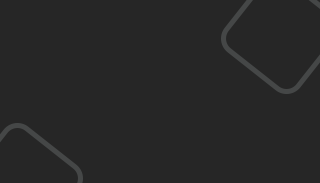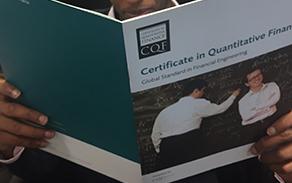A Day in the Life of a Senior ALM Trader

CQF alumnus, Jose Pedro Melo, is a Senior ALM Trader for Itaú in Santiago, Chile. Jose studied Business and a Master’s in Financial Engineering at Universidad Adolfo Ibáñez in Chile, before starting his career as an ALM Liquidity Trader for Itaú. Since then, he has worked his way up and in 2020 he completed the CQF program.
We caught up with Jose to find out what a typical day in his current role looks like.
Working as a trader at Itaú means being involved in many activities. Within these activities, there are things related to the market - the development of investment strategies - and also activities related to the core business - retail and wholesale banking. This presents many opportunities for those who work in the front office, as results are not only measured by PNL, but also by the ability to understand the banking business as a whole.
8:30 AM – 9:00 AM
Every morning we begin our day with a market summary prepared by each desk that makes up the bank's treasury (ALM, trading, sales, and economists). This instance allows us to have a holistic view of what is happening in the market and within the bank. After the pandemic, Itaú incorporated flexibility to work from home into its weekly routine, giving the employee the ability to choose to work from home or the office. In my case, this is very useful, as we often have intensive projects that require thinking, which are easier to work on from the tranquility of my home, and when it is necessary to coordinate things with my colleagues, it is possible to do so in a physical space such as the office.
9:00 AM - 14:00 PM
During the morning, activities are primarily focused on the market. This is where the strategies that have been previously developed are executed. In the case of my team, we are responsible for the bank's debt management and balance risk management, so we have to be aware of the conditions for issuing short-term (deposits) and long-term (bonds) debt. In addition, we have to monitor and execute currency and interest rate derivative operations in all the currencies in which the bank has operations and risk factors. Not all days are as active in the market, which gives space to look at other topics. For example, there are days when we work together with the teams dedicated to credit origination (retail and wholesale) to develop strategies and work on ideas that allow us to get closer to our clients.
14:00 PM - 15:00 PM
It's lunch time, a moment to rest a bit from the intensity of the mornings. In general, we take advantage of visiting the various restaurants located in Nueva Las Condes, Santiago.
15:00 PM - 17:45 PM
In the afternoon is where all intellectual work is done. In general, I use this space to develop all the projects I am involved in, which cover many things related to what we do at the bank and the treasury. Some examples of projects in which I have acted as a leader or participant include:
- Developing a pricing library in C++ that allows us to value the bank's instruments - assets and liabilities, fixed income securities and derivatives - and raise the analysis capacity we have within the bank. Here, we had to work with a lot of parallelization and implement stochastic processes to be able to value, for example, XVAs and products with embedded options.
- Creating tools that allow access to this information in a more user-friendly way to other treasury users. Here, for example, I developed REST APIs so that users can access the models directly and web user interfaces, created in React, or even Excel integrations through add-ins.
- Not all projects are programming-based, so I have also had to work on study projects. A recent task was the study of hybrid capital instruments (AT1), where I had to develop the risk evaluation and pricing methodology for this type of instrument.
- As mentioned earlier, these analyses are also related to the bank's strategy. In particular, I have had to work on two types of strategies:
- Funding strategies and how these strategies relate to the bank's commercial growth plans. Here, as tools we use the information provided by the commercial teams and industry benchmarks.
- Market strategies and how these relate to the bank's interest rate and currency risk appetite. Here we mainly use market data and quantitative methods in order to have a more scientific opinion of what is seen in the market.
18:00 PM
Usually we are done by this time, so it is time to do others things not related to work. Santiago has many things that can be done in the afternoons. There are a lot of bars, hikes, and sports that are very close to where I work. I often go to play Pádel and sometimes enjoy some beers and barbecue with friends.
Find out more about Quant Finance Careers
If you are interested in becoming a lead software engineer, explore the CQF Careers Guide to Quantitative Finance. Learn more about the skills needed and average salary you can earn in North America, Asia, and Europe for key career paths in quantitative finance.




